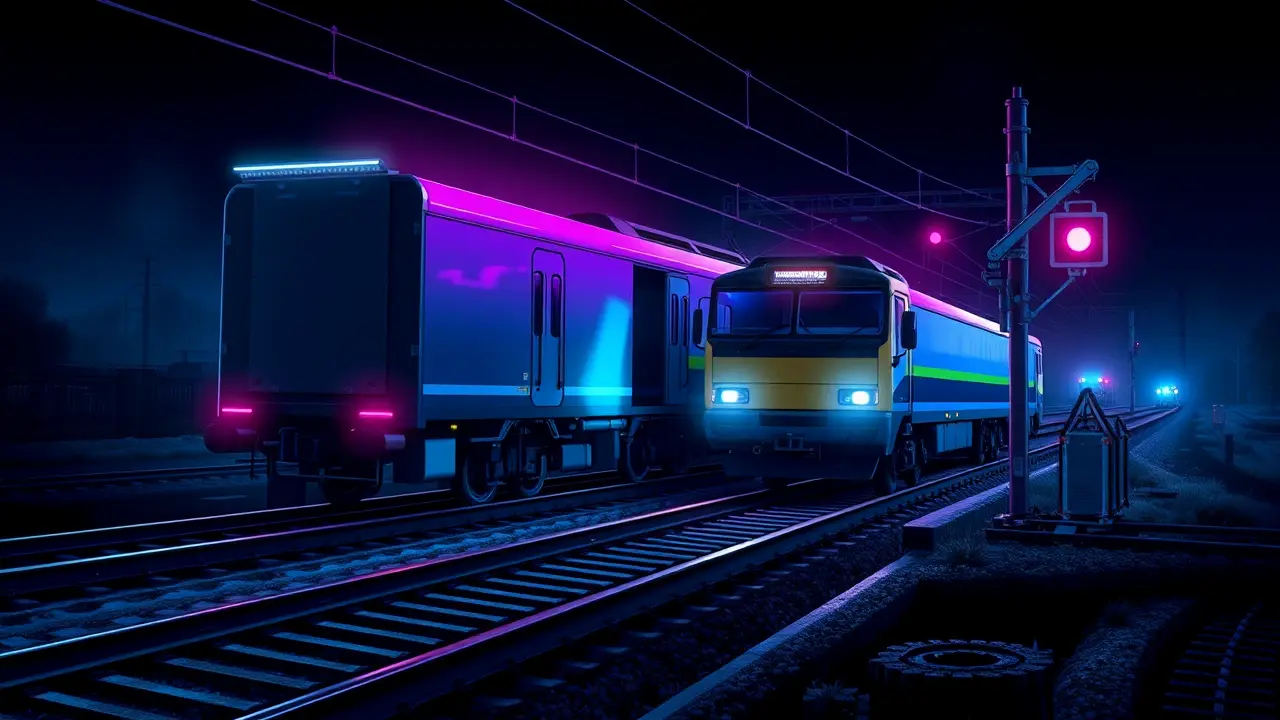
Otheraccidents & disastersTransport Disasters
Train Collides with Truck at Dutch Level Crossing
JO
John Parker
3 days ago7 min read
A freight train collided with a heavy goods vehicle at an ungated level crossing in the rural Dutch village of Meteren this morning, triggering a rapid multi-agency emergency response and sending five individuals to local hospitals with what authorities are cautiously describing as minor, non-life-threatening injuries. The sheer force of the impact, occurring just after the morning rush hour, sent the truck's trailer careening off the tracks while the locomotive itself sustained significant front-end damage, coming to a grinding halt nearly a hundred meters down the line and sparking immediate fears of a major casualty event.Initial reports from the Gelderland police force and ProRail, the national rail infrastructure manager, indicate the crossing was a known passive type, lacking automatic barriers or warning lights, relying solely on standard crossbuck signs—a design increasingly scrutinized across Europe for its inherent safety limitations, particularly on lower-traffic rural lines where driver complacency can be fatal. While the miraculous avoidance of serious harm is the dominant headline today, this incident throws a harsh, urgent spotlight back onto the long-simmering debate over the pace of safety upgrades on the Netherlands' extensive rail network, a system otherwise lauded for its efficiency and density.This is not an isolated event; it echoes the tragic 2020 collision in Dalfsen that claimed two lives and the 2018 disaster in Oss where a train hit a cement mixer, killing one and injuring dozens, each time prompting vows from politicians and rail executives for accelerated modernization of the country's estimated several hundred remaining passive crossings. The Dutch Safety Board has already dispatched investigators to the scene, their mandate clear: to dissect the precise sequence of events, assess the truck driver's actions and sightlines, evaluate the train operator's reaction time, and determine if systemic failures—be it in infrastructure, regulation, or public awareness campaigns—contributed to this near-miss that could have so easily been a national tragedy.The immediate operational fallout is severe; the crucial freight corridor between Utrecht and Den Bosch has been completely severed, forcing the cancellation of dozens of intercity and freight services, creating a domino effect of delays across the central Netherlands, and stranding thousands of commuters, a stark reminder of the network's vulnerability to single-point failures. Economists are already calculating the cost in disrupted supply chains and lost productivity, while local residents in Meteren speak of a long-held, nagging fear about the crossing, describing it as a treacherous blind spot, especially during the low-hanging sun of morning and evening.This incident will inevitably fuel comparisons with neighboring Germany's aggressive program of crossing elimination and Britain's focus on risk-based, targeted closures, putting immense pressure on the Dutch Ministry of Infrastructure and Water Management to re-evaluate its funding priorities and timeline for making the entire network inherently safer. In the coming days, expect fierce parliamentary questions, urgent consultations between ProRail and transport unions demanding better protection for their members, and a renewed public campaign from safety advocacy groups who have long argued that the cost of installing basic automatic warnings is negligible compared to the priceless value of a human life. The final report will be months in the making, but the political and public reckoning begins now, as the Netherlands confronts the uncomfortable reality that its world-class rail system still contains dangerous, antiquated chokepoints where metal and momentum meet with terrifying, and today thankfully not catastrophic, consequences.
#train collision
#level crossing
#truck
#minor injuries
#Netherlands
#transport safety
#featured
Stay Informed. Act Smarter.
Get weekly highlights, major headlines, and expert insights — then put your knowledge to work in our live prediction markets.
Comments
It’s quiet here...Start the conversation by leaving the first comment.
© 2025 Outpoll Service LTD. All rights reserved.